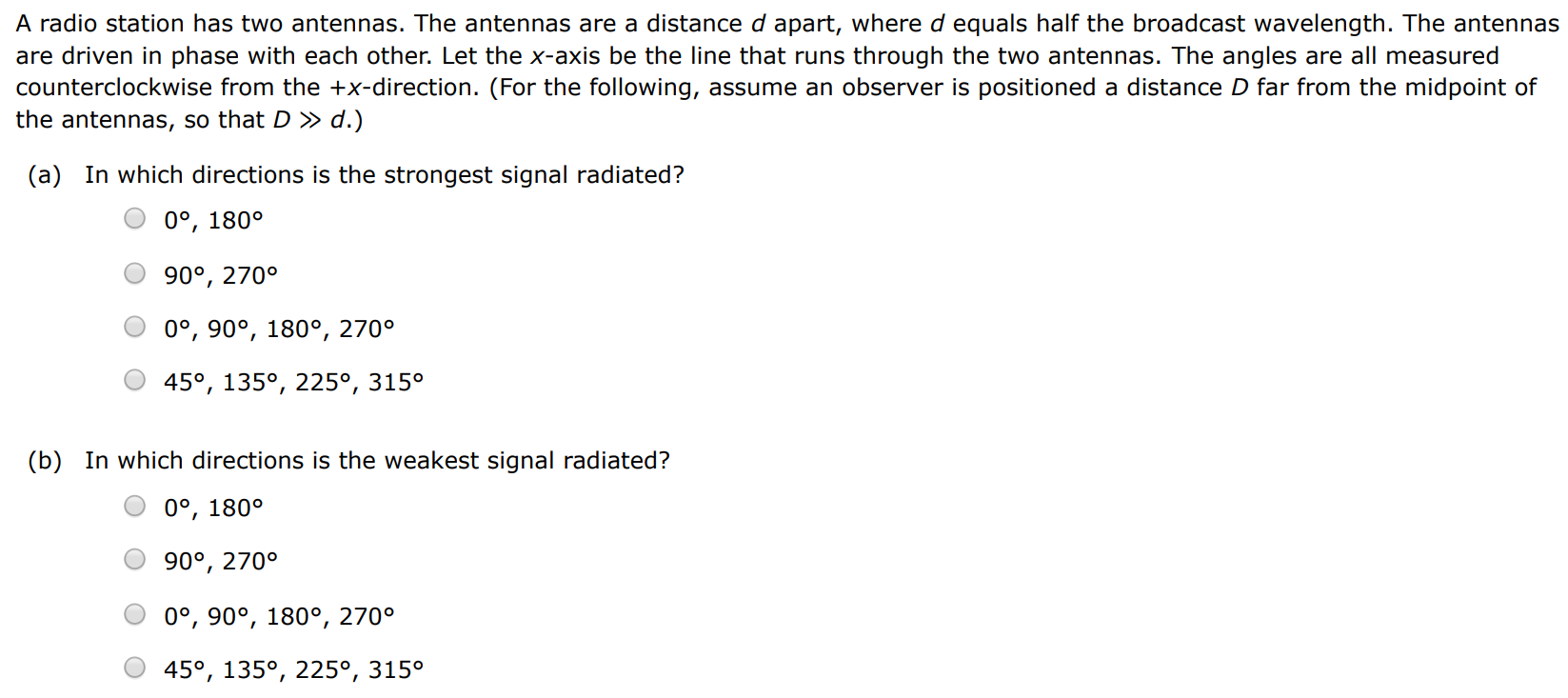A radio station has two antennas. The antennas are a distance d apart, where d equals half the broadcast wavelength. The antennas are driven in phase with each other. Let the x-axis be the line that runs through the two antennas. The angles are all measured counterclockwise from the +x-direction. (For the following, assume an observer is positioned a distance D far from the midpoint of the antennas, so that D≫d. ) (a) In which directions is the strongest signal radiated? 0∘, 180∘ 90∘, 270∘ 0∘, 90∘, 180∘, 270∘ 45∘, 135∘, 225∘, 315∘ (b) In which directions is the weakest signal radiated? 0∘, 180∘ 90∘, 270∘ 0∘, 90∘, 180∘, 270∘ 45∘, 135∘, 225∘, 315∘
